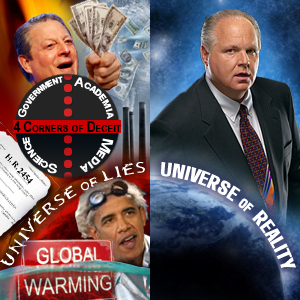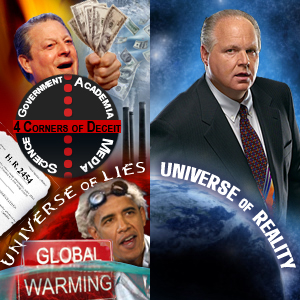I wrote about the “Climategate” controversy (over emails stolen from the University of East Anglia’s Climatic Research Unit) once, which is about what it warranted.
My silent protest had no effect whatsoever, of course, and the story followed a depressingly familiar trajectory: hyped relentlessly by right-wing media, bullied into the mainstream press as he-said she-said, and later, long after the damage is done, revealed as utterly bereft of substance. It’s a familiar script for climate faux controversies, though this one played out on a slightly grander scale.
Investigations galore
Consider that there have now been five, count ’em five, inquiries into the matter. Penn State established an independent inquiry into the accusations against scientist Michael Mann and found “no credible evidence” [PDF] of improper research conduct. A British government investigation run by the House of Commons’ Science and Technology Committee found that while the CRU scientists could have been more transparent and responsive to freedom-of-information requests, there was no evidence of scientific misconduct. The U.K.’s Royal Society (its equivalent of the National Academies) ran an investigation that found “no evidence of any deliberate scientific malpractice.” The University of East Anglia appointed respected civil servant Sir Muir Russell to run an exhaustive, six-month independent inquiry; he concluded that “the honesty and rigour of CRU as scientists are not in doubt … We have not found any evidence of behaviour that might undermine the conclusions of the IPCC assessments.”
All those results are suggestive, but let’s face it, they’re mostly … British. Sen. James Inhofe (R-Okla.) wanted an American investigation of all the American scientists involved in these purported dirty deeds. So he asked the Department of Commerce’s inspector general to get to the bottom of it. On Feb. 18, the results of that investigation were released. “In our review of the CRU emails,” the IG’s office said in its letter to Inhofe [PDF], “we did not find any evidence that NOAA inappropriately manipulated data … or failed to adhere to appropriate peer review procedures.” (Oddly, you’ll find no mention of this central result in Inhofe’s tortured public response.)
Whatever legitimate issues there may be about the responsiveness or transparency of this particular group of scientists, there was nothing in this controversy — nothing — that cast even the slightest doubt on the basic findings of climate science. Yet it became a kind of stain on the public image of climate scientists. How did that happen?
Smooth criminals
You don’t hear about it much in the news coverage, but recall, the story began with a crime. Hackers broke into the East Anglia email system and stole emails and documents, an illegal invasion of privacy. Yet according to The Wall Street Journal‘s Kim Strassel, the emails “found their way to the internet.” In ABC science correspondent Ned Potter’s telling, the emails “became public.” The New York Times’ Andy Revkin says they were “extracted from computers.”
None of those phrasings are wrong, per se, but all pass rather lightly over the fact that some actual person or persons put them on the internet, made them public, extracted them from the computers. Someone hacked in, collected emails, sifted through and selected those that could be most damning, organized them, and timed the release for maximum impact, just before the Copenhagen climate talks. Said person or persons remain uncaught, uncharged, and unprosecuted. There have since been attempted break-ins at other climate research institutions.
If step one was crime, step two was character assassination. When the emails were released, they were combed over by skeptic blogs and right-wing media, who collected sentences, phrases, even individual terms that, when stripped of all context, create the worst possible impression. Altogether the whole thing was as carefully staged as any modern-day political attack ad.
Yet when the “scandal” broke, rather than being about criminal theft and character assassination, it was instantly “Climategate.” It was instantly about climate scientists, not the illegal and dishonest tactics of their attackers. The scientists, not the ideologues and ratf*ckers, had to defend themselves.
Burden of proof
It’s a numbingly familiar pattern in media coverage. The conservative movement that’s been attacking climate science for 20 years has a storied history of demonstrable fabrications, distortions, personal attacks, and nothingburger faux-scandals — not only on climate science, but going back to asbestos, ozone, leaded gasoline, tobacco, you name it. They don’t follow the rigorous standards of professional science; they follow no intellectual or ethical standards whatsoever. Yet no matter how long their record of viciousness and farce, every time the skeptic blogosphere coughs up a new “ZOMG!” it’s as though we start from zero again, like no one has a memory longer than five minutes.
Here’s the basic question: At this point, given their respective accomplishments and standards, wouldn’t it make sense to give scientists the strong benefit of the doubt when they are attacked by ideologues with a history of dishonesty and error? Shouldn’t the threshold for what counts as a “scandal” have been nudged a bit higher?
Agnotological inquiry
 The lesson we’ve learned from climategate is simple. It’s the same lesson taught by death panels, socialist government takeover, Sharia law, and Obama’s birth certificate. To understand it we must turn to agnotology, the study of culturally induced ignorance or doubt. (Hat tip to an excellent recent post on this by John Quiggen.)
The lesson we’ve learned from climategate is simple. It’s the same lesson taught by death panels, socialist government takeover, Sharia law, and Obama’s birth certificate. To understand it we must turn to agnotology, the study of culturally induced ignorance or doubt. (Hat tip to an excellent recent post on this by John Quiggen.)
Beck, Palin, and the rest of Fox News and talk radio operate on the pretense that they are giving consumers access to a hidden “universe of reality,” to use Limbaugh’s term. It’s a reality being actively obscured the “lamestream media,” academics, scientists, and government officials. Affirming the tenets of that secret reality has become an act of tribal reinforcement, the equivalent of a secret handshake.
The modern right has created a closed epistemic loop containing millions of people. Within that loop, the implausibility or extremity of a claim itself counts as evidence. The more liberal elites reject it, the more it entrenches itself. Standards of evidence have nothing to do with it.
The notion that there is a global conspiracy by professional scientists to falsify results in order to get more research money is, to borrow Quiggen’s words about birtherism, “a shibboleth, that is, an affirmation that marks the speaker as a member of their community or tribe.” Once you have accepted that shibboleth, anything offered to you as evidence of its truth, no matter how ludicrous, will serve as affirmation. (Even a few context-free lines cherry-picked from thousands of private emails.)
Living with the loop
There’s one thing we haven’t learned from climategate (or death panels or birtherism). U.S. politics now contains a large, well-funded, tightly networked, and highly amplified tribe that defines itself through rejection of “lamestream” truth claims and standards of evidence. How should our political culture relate to that tribe?
We haven’t figured it out. Politicians and the political press have tried to accommodate the shibboleths of the right as legitimate positions for debate. The press in particular has practically sworn off plain judgments of accuracy or fact. But all that’s done is confuse and mislead the broader public, while the tribe pushes ever further into extremity. The tribe does not want to be accommodated. It is fueled by elite rejection.
At this point mainstream institutions like the press are in a bind: either accept the tribe’s assertions as legitimate or be deemed “biased.” Until there is a way out of that trap, there will be more and more Climategates.




